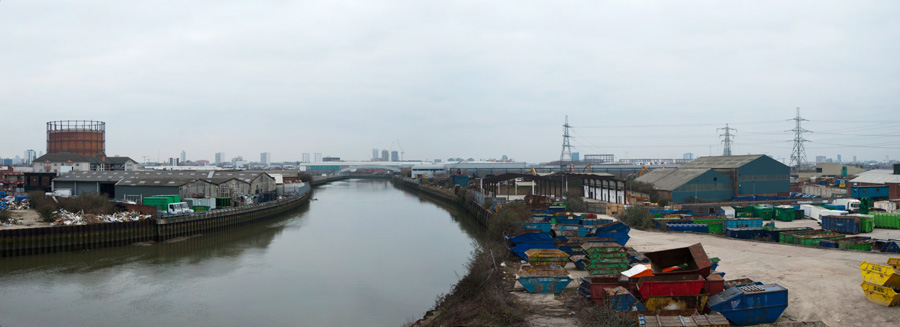Almost the only area where I still wish I was taking film is panoramic photography. Really because it is just so simple to taken with film and a panoramic camera – just compose and press the button. Digital is more flexible and powerful but considerably more fuss, even for the kind of simple panoramas I prefer.
The 35mm panoramic film cameras I used had lenses around 26-30mm focal length which gives a decent vertical angle of view without usually encompassing huge areas of sky. The horizontal angle of view depended on how the camera worked, but with the swing lens versions was dictated by the angle the lens swung through, typically around 120 degrees.
So to get similar results with digital I want to use a lens with a similar vertical field, so either the same range of focal length or a slightly longer length used with the camera in portrait format. At or around the 30mm end I find I need a set of 3 exposures to stitch (perhaps 4 if I’m shooting portrait format) while at the wider end, 2 frames will do.
One small complication is that I mainly shoot with zoom lenses, and if you are going to stitch images it is fairly important that the lens focal length remains constant. It really is only easy to be sure of this shooting at one or other end of the lens focal length range, although I suppose it would be possible to use masking tape to hold the lens at a fixed focal length.
Most zooms also alter focal length slightly as they focus, so at least in theory you need to hold the same focus throughout the series of exposures. This isn’t usually a problem as most panoramas can be taken with the lens focussed at infinity.
It’s also easier to get good stitching if all the pictures are taken at the same exposure – and under the same lighting conditions. The British climate is fickle and rather sneaky in this respect, rather too good at brightening up a little without telling you (or the reverse.) Of course there is often considerable variation in lighting as you swing through that 120 degrees or so, and it’s something that film, with its gradual response to excessive highlights copes with rather better than digital, which has a pretty sharp cut-off on over-exposure.
Film wasn’t of course without its problems. You could (and I did) expose it wrongly and development had its hazards too. I’ve had film returned from a pro lab absolutely blank that I know was properly exposed and made countless errors over the years when processing my own which have resulted in damaged, uneven, dense or very thin negatives. But at least out there in the field it was simple.

Anyway, here is a very small version of one of the results which I was reasonably pleased with. The file is actually twice the size it displays at on the blog, and you can see it and the others at 900pixels wide on My London Diary.
The actual image I produced from PTGui, stitched from two 12Mp images (4288×2848 pixels each) is 8028×2917 pixels, an aspect ratio of 2.75:1, and the horizontal angle of view is a little under 100 degrees. It would print nicely at perhaps 30 inches wide if I had a sheet of suitable paper that large!
It uses a equirectangular projection which works well if – as here – the vertical angle isn’t too large, and gives a very natural effect. The image is too wide to look good in normal rectilinear perspective. One advantage of the equirectangular is that it more of less keeps the full width of the image, allowing me to retain the yellow skips at the extreme right of the image, which were for me a vital part of the composition.